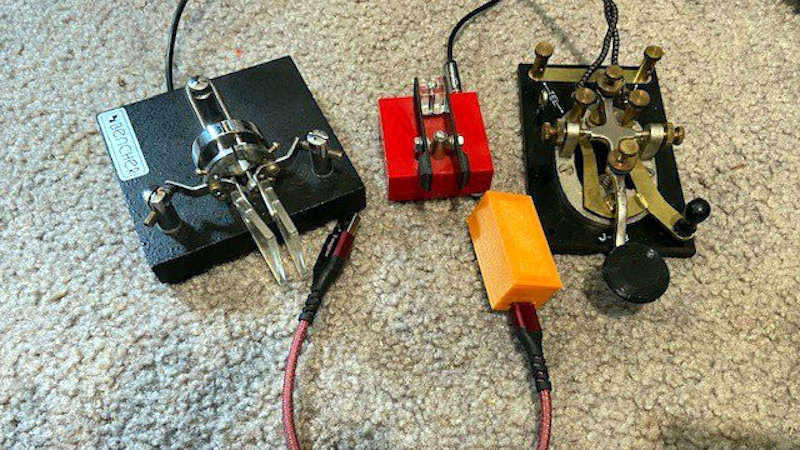When it comes to rendering text input into an electronic form,the newest keyboards use USB for wired interfacing, while the oldest Morse keys use a single conductor. Shall the two ever meet? For [Matthew Sparks] the answer is yes, with his “The Gadget” Morse-to-USB HID interface which presents a Morse key to a computer as though it were a USB keyboard.
At its heart is a Seeduino Arduino clone, upon which the Morse key waggles a pin, and which through the extensive magic of software recognizes the keyed characters and converts them into USB key presses for the computer. It’s thus a surprisingly simple project, and the write-up spends far more time proselytizing the art of the carrier wave than it does on Arduino code.
Morse is simultaneously a manual art form, an efficient means of communicating through congested radio bands, and an anachronism, which probably explains its continued appeal in the radio amateur fraternity. We’re not sure how many keyboard warriors will switch to the single key with this project, but we can see that it might be a useful aid to learning as well as a pretty quick input method for the owner of an experienced fist.
Morse has featured in many projects here before, not least in this assistive Morse keyboard.

















Now, [Sparks] is a great name for a CW aficionado!
We would be remiss if we did not mention Mitxela’s offerings in this space too:
Hardware: https://mitxela.com/projects/morse_code_usb_keyboard_mk_ii
And a software-only version: https://mitxela.com/projects/morse_code_usb_keyboard
See also: https://mitxela.com/projects/morse_code_usb_keyboard_mk_ii.
This is neat. I am proficient in Morse code with a hand-key and a paddle-plus-keyer. I suggest taking this to the next level. Real Morse operators communicate with far more than words alone. There are many Q-codes [1] and Prosigns [2] that are used to make communications more efficient. The Morse-to-USB HID bridge might be able to recognize Q-codes and Prosigns and automatically convert them to plain-text.
* References:
1. Q code
https://en.wikipedia.org/wiki/Q_code
2. Prosigns for Morse code
https://en.wikipedia.org/wiki/Prosigns_for_Morse_code
“Real Morse operators communicate with far more than words alone.”
Yup. And real amateurs do actually have a conversation in a “QSO”. 😁
They don’t just exchange a few numbers, abbreviation and call it a QSO.
For example, they exchange their names (!) and say hello/good bye. Wow.
That’s something that I always found funny.
In, say, a contest, they give each others a 599, but have to ask multiple times for the call signs, hi. 😉
Whisky ??? again? Again? Again? Whisky Zero, again? Whisky Zero Alpha, again? Again? Again? Five-Nine-Nine, thank you my friend, QRZ….
something can be 5/9 in the clear if everybody else shuts up, that exchange is a 5/9. Even if you need to ask several times.
you mean that the guy with 5W and a wire in a contest trying to get Netherlands – Aruba to work on 15m with a simple vertical which succeeds, is not a ham. Interesting.
So, maybe you like ragchewing. maybe you just want to have a DXCC in the logs. It does not mean thay you are not a ham to me. Even if you use 1.5 kW…
Also: multiple times asking for a call sign can happen if you have a lot of QRM and sometimes in the clear get the whole call. In a contest you need to be 100% sure that both ends received the right information. You don’t like contests I guess but it doesn’t make anyne different.
Looking forward to extending this to implement UTF-8 charsets!